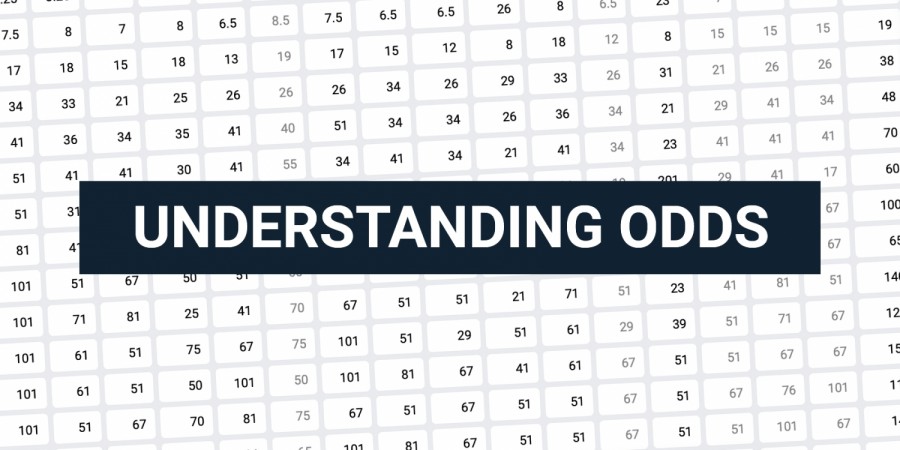Introduction
Understanding betting odds is essential for anyone looking to bet successfully on sports. Betting odds reflect the likelihood of an event occurring and determine how much you can win from a bet. In this comprehensive guide, we’ll explain what betting odds are, how they work, and how you can use them to make informed betting decisions.
What Are Betting Odds?
Betting odds are numerical representations used by bookmakers to indicate the probability of a specific outcome in a sporting event. They also show how much money you can win if your bet is successful. Odds can be presented in different formats, including fractional, decimal, and moneyline (American) odds.
Types of Betting Odds
Fractional Odds
Fractional odds are commonly used in the UK and are presented as a fraction (e.g., 5/1). The first number (numerator) represents the potential profit, while the second number (denominator) represents the stake.
Example: Odds of 5/1 mean that for every KES 1 you bet, you could win KES 5 in profit, plus your original stake back.
Decimal Odds
Decimal odds are popular in Europe and Australia. They are presented as a single number (e.g., 6.00) and show the total return on a bet, including the stake.
Example: Odds of 6.00 mean that for every KES 1 you bet, you would receive KES 6 if you win (KES 5 profit + KES 1 stake).
Moneyline (American) Odds
Moneyline odds are primarily used in the United States and are expressed as either a positive or negative number. Positive moneyline odds show how much profit you would make on a KES 100 bet, while negative moneyline odds show how much you need to bet to win KES 100.
Example: Odds of +500 mean you could win KES 500 profit on a KES 100 bet. Odds of -200 mean you need to bet KES 200 to win KES 100.
Understanding Probability
Probability indicates how likely an event is to occur. Bookmakers use odds to reflect the probability of an outcome. The higher the odds, the less likely the outcome; the lower the odds, the more likely the outcome.
Calculating Probability from Fractional Odds:
Probability(%)=DenominatorNumerator+Denominator×100\text{Probability} (\%) = \frac{\text{Denominator}}{\text{Numerator} + \text{Denominator}} \times 100Probability(%)=Numerator+DenominatorDenominator×100
Example:
- 5/1 odds: 15+1×100=16.67%\frac{1}{5+1} \times 100 = 16.67\%5+11×100=16.67%
- 1/4 odds: 41+4×100=80%\frac{4}{1+4} \times 100 = 80\%1+44×100=80%
Calculating Probability from Decimal Odds:
Probability(%)=1Decimal Odds×100\text{Probability} (\%) = \frac{1}{\text{Decimal Odds}} \times 100Probability(%)=Decimal Odds1×100
Example:
- 6.00 odds: 16.00×100=16.67%\frac{1}{6.00} \times 100 = 16.67\%6.001×100=16.67%
- 1.25 odds: 11.25×100=80%\frac{1}{1.25} \times 100 = 80\%1.251×100=80%
How to Read Betting Odds
Reading betting odds helps you understand how much you can win and the likelihood of an outcome. Here’s how to interpret fractional and decimal odds:
Fractional Odds:
- 10/1: Bet KES 1 to win KES 10 (KES 11 total return including stake).
- 5/2: Bet KES 2 to win KES 5 (KES 7 total return including stake).
- 1/2: Bet KES 2 to win KES 1 (KES 3 total return including stake).
Decimal Odds:
- 11.00: Bet KES 1 to return KES 11.
- 2.50: Bet KES 2 to return KES 5.
- 1.50: Bet KES 1 to return KES 1.50.
Using Odds to Calculate Winnings
To calculate your potential winnings, use the following formulas:
Fractional Odds:
Winnings=Stake×NumeratorDenominator+Stake\text{Winnings} = \text{Stake} \times \frac{\text{Numerator}}{\text{Denominator}} + \text{Stake}Winnings=Stake×DenominatorNumerator+Stake
Example: KES 100 on 5/1 odds: 100×51+100=600100 \times \frac{5}{1} + 100 = 600100×15+100=600
Decimal Odds:
Winnings=Stake×Decimal Odds\text{Winnings} = \text{Stake} \times \text{Decimal Odds}Winnings=Stake×Decimal Odds
Example: KES 100 on 6.00 odds: 100×6.00=600100 \times 6.00 = 600100×6.00=600
How Do Fractional Odds Work?
Fractional odds are the most popular in the UK and are used by most bookmakers. They indicate how much profit you will make relative to your stake.
Example:
- Odds of 7/2: Bet KES 2 to win KES 7, plus your KES 2 stake back, totaling KES 9.
- Odds of 9/1: Bet KES 1 to win KES 9, plus your KES 1 stake back, totaling KES 10.
Fractional odds can also show the probability of an event. Higher fractions indicate lower probability and vice versa.
How Do Decimal Odds Work?
Decimal odds are simpler and show the total return for each KES 1 staked.
Example:
- Odds of 5.00: Bet KES 1 to return KES 5.
- Odds of 1.75: Bet KES 2 to return KES 3.50.
Odds above 2.00 are odds against, implying a less likely outcome. Odds below 2.00 are odds on, implying a more likely outcome.
How to Convert Odds
Converting between fractional and decimal odds is straightforward:
From Fractional to Decimal:
Decimal Odds=NumeratorDenominator+1\text{Decimal Odds} = \frac{\text{Numerator}}{\text{Denominator}} + 1Decimal Odds=DenominatorNumerator+1
Example: 5/2 odds: 52+1=3.50\frac{5}{2} + 1 = 3.5025+1=3.50
From Decimal to Fractional:
Fractional Odds=(Decimal Odds−1)\text{Fractional Odds} = (\text{Decimal Odds} – 1)Fractional Odds=(Decimal Odds−1)
Example: 3.50 odds: 3.50−1=523.50 – 1 = \frac{5}{2}3.50−1=25
Conclusion
Understanding betting odds is crucial for making informed bets and maximizing your chances of winning. By grasping how fractional and decimal odds work, knowing how to calculate probability and potential winnings, you’ll be better equipped to navigate the world of sports betting. Whether you’re betting on football, basketball, or any other sport, mastering the basics of betting odds will enhance your overall betting experience. Start applying these insights today on JamboBet and turn your knowledge into winning bets.
ALSO READ:JamboBet Jackpot on Virtual Games: Featuring Golden Race


